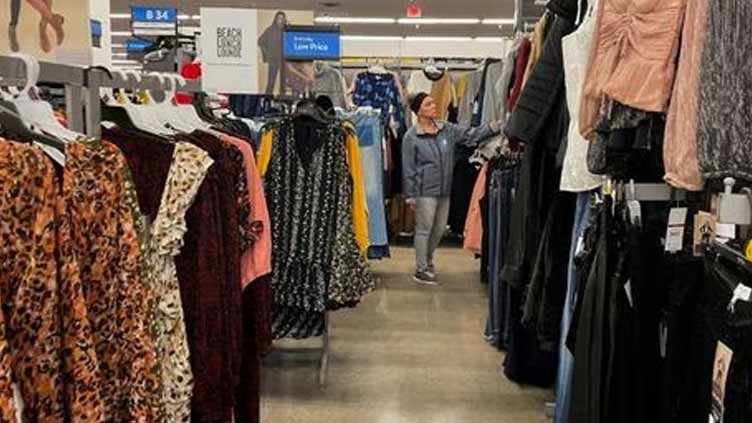Amazon helps US retail sales power ahead in July

Business
Demand is being underpinned by strong wage gains from a tight labor market
WASHINGTON (Reuters) - U.S. retail sales increased more than expected in July as Americans boosted online purchases and dined out more, suggesting the economy continued to expand early in the third quarter and keeping a recession at bay.
The report from the Commerce Department on Tuesday also showing consumers splurging on hobbies, sporting goods and clothing, underscoring their resilience despite the Federal Reserve's aggressive interest rate hikes to tame inflation.
Demand is being underpinned by strong wage gains from a tight labor market. Despite the signs of persistent strength in consumer spending, economists did not expect the Fed to raise interest rates next month, with inflation retreating.
"As long as core inflation continues to fall rapidly, resilient growth won't in itself be enough to prompt further rate hikes from the Fed," said Andrew Hunter, deputy chief U.S. economist at Capital Economics.
Retail sales jumped 0.7% last month. Data for June was revised higher to show sales rising 0.3% instead of the previously reported 0.2%. Economists polled by Reuters had forecast retail sales would climb 0.4%. Sales increased 3.2% on year-on-year basis in July.
Retail sales are mostly goods and are not adjusted for inflation. They likely received a boost from Amazon's (AMZN.O) Prime Day promotion last month, which was the biggest on record. Online sales accelerated 1.9% after rising 1.5% in June.
Receipts at building material and garden equipment supplies dealers rebounded 0.7%. Clothing store sales increased 1.0%.
Consumers spent more on sporting goods, hobbies, books and musical instruments, boosting sales by 1.5%. Grocery store sales rose as did receipts at department stores. Sales at service stations gained 0.4%.
Sales at food services and drinking places, the only services category in the retail sales report, shot up 1.4% after rising 0.8% in June. Economists view dining out as a key indicator of household finances.
But the value of sales at auto dealerships fell 0.3% after rising 0.7% in June. Receipts at furniture stores dropped 1.8% and electronics and appliance store sales declined 1.3%.
Receding inflation is lifting consumers' purchasing power. Households are also taking on debt to fund purchases.
Though lower-income households have exhausted excess savings accumulated during the COVID-19 pandemic, there remains a decent chunk of money stashed away to support consumer spending.
While a separate report from the Labor Department on Tuesday showed import prices rebounding strongly in July, underlying imported inflation pressures remained subdued. The government reported last week that consumer prices rose moderately in July.
With inflation ebbing, most economists believe the Fed is probably done raising rates, and they are increasingly warming up to the idea that the U.S. central bank could steer the economy towards a "soft landing" rather than the recession that they had been forecasting since last year. The Fed has since March 2022 raised its benchmark overnight interest rate by 525 basis points to the current 5.25%-5.50% range.
Excluding automobiles, gasoline, building materials and food services, retail sales surged 1.0% in July. Data for June was revised lower to show these so-called core retail sales increasing 0.5% instead of the previously reported 0.6%.
Core retail sales correspond most closely with the consumer spending component of gross domestic product.
Consumer spending accounts for more than two-thirds of the U.S. economy. Though consumer spending slowed in the second quarter from the robust pace of the first quarter, the increase was enough to help guide the economy to a 2.4% annualized growth rate in the April-June period.


